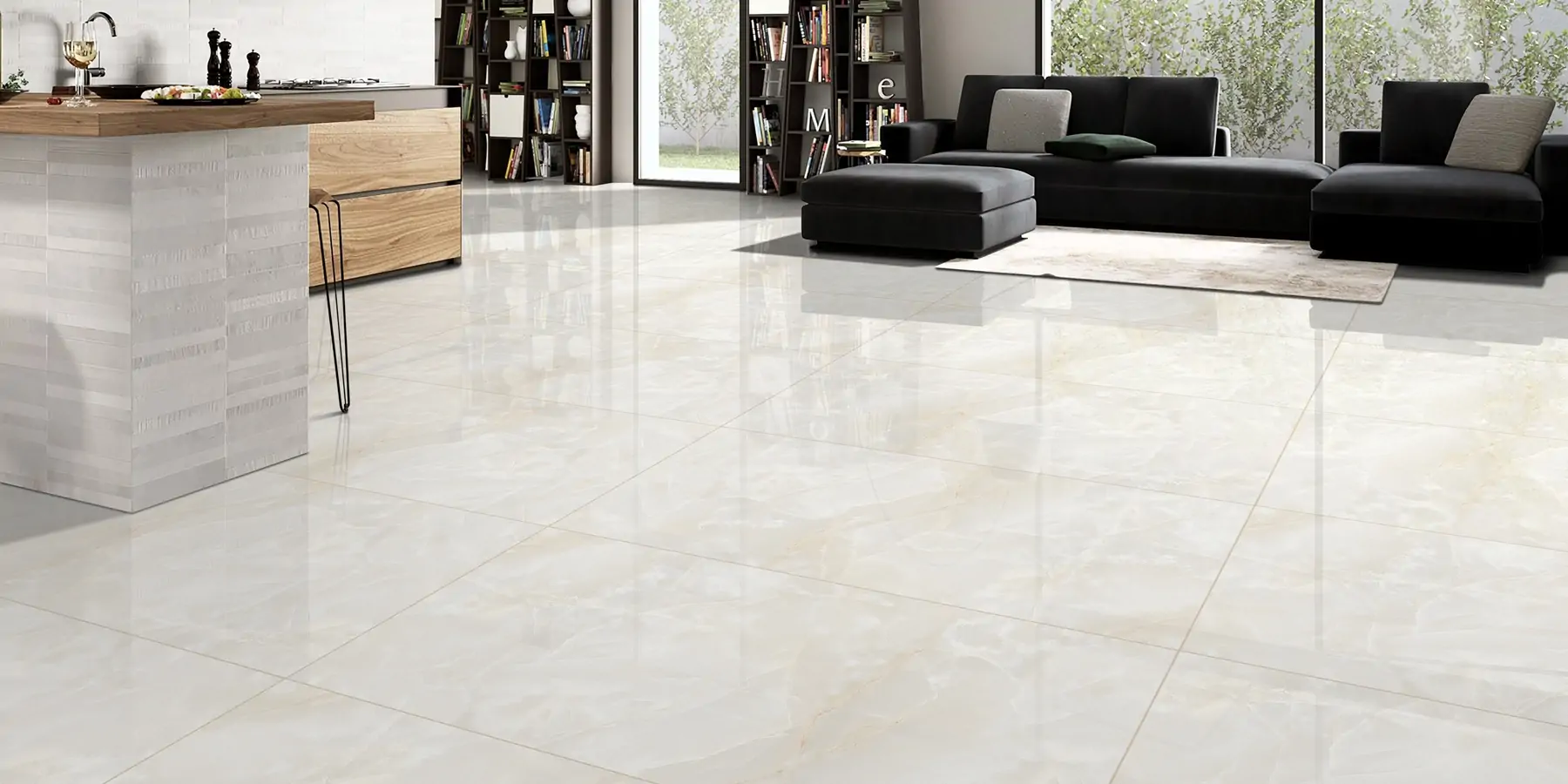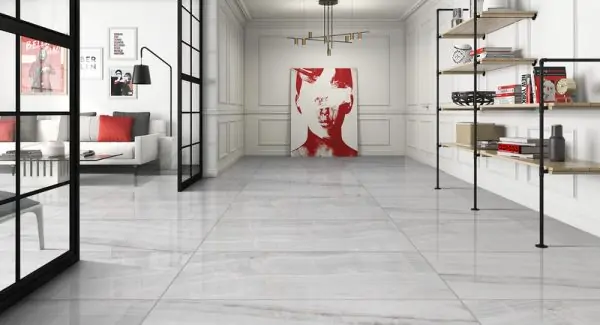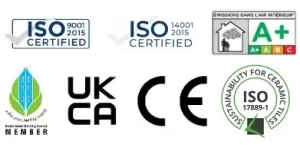Browse products by
Filter By Type
Filter By Finish
Filter By Look
Filter By Application
Filter By Type
Filter By Look
Filter By Application
Filter By Size
10 Tips and Tricks for DIY Tile Installation
Aug 2022
We must admit that tile installation is a demanding task. Most people seek professional help to get it done. But thankfully, it is not rocket science, so we can decode the money-saving way of installing them at home. By that, we mean to learn the DIY route of tile installation.
Here you go with the Lavish Ceramics expert’s advised 10 Tips and Tricks for DIY Installation!
#1 First of all, picture and prepare the surface
DIY projects need to be planned before the day of execution, especially if it’s Floor Tile installation which involves a ton of preparatory steps. You have to accurately analyze the area where you want to lay the tiles. It includes taking proper base measurements, buying enough tiles, deciding the laying format, and a lot more. Next, you need to prepare the surface and make it suitable for installing tiles. The surface should be smooth and flat for the tiles to be placed perfectly.
#2 Bag up precise DIY tiling stuff
A craftsman without his tool is not different from an ordinary man. So, you cannot get to work until you have acquired all the primary equipment and materials for tiling. And when you’re buying them, don’t go for something cheap or of low quality. Inexpensive products may save you some money in the beginning but will increase the cost of maintenance later. Be precise about the tools you pick, and in case of doubt, ask the vendor for guidance by telling him your requirements.
#3 Prefer Guide Boards over Lines
Snapping chalk lines is the standard method for aligning the initial rows of tiles. But this can be troublesome for two main reasons. In the first place, chalk lines are difficult to see if you slop over them with thin-set paint. Secondly, while setting the next row of tiles, the first row may move. Therefore, it’s always a good decision to use Guide Boards instead of chalk lines. Guide boards, in comparison to chalk lines, don’t shift or disappear under grout tiles as you set others.
#4 If you’re dealing with porcelain tiles larger than 300×300 mm, consider using tile leveling systems
300×300 mm porcelain tiles are large format tiles. If your project demands tiles with dimensions equal to 300×300 mm or more, it’s highly advisable to use a proper leveling system while placing them. By using a leveling system, you can eliminate the tile lippage variations that frequently occur between large format tiles.
#5 Read the manual when mixing adhesives and grouts
If you’re not a pro at mixing adhesives and grout, the best tip is to follow the directions on the bag provided by the manufacturer. To obtain the ideal consistency and bond for their adhesive, different brands have different guidelines and specifications to follow. Continue mixing your adhesive and grout according to the directions on the bag until the proper consistency is achieved.

#6 Prepare a smooth grout mix
Once you’re done mixing the adhesives and grout, you should leave them undisturbed for about 10 to 15 minutes. This gives the dry chunks time to absorb water before you mix everything in the end. After slaking, stir again and, if necessary, add small portions of water. Later, when you mix up the grout, you may have to wait again.
#7 Cut tiles with a diamond wet saw
If you’re a beginner in tile installation, then it leaves a lot of room for you to make mistakes. The most common ones are crackling and breaking tiles when cutting and handling them. It’s bound to happen unless you’re dealing with porcelain stoneware tiles. However, if there are too many broken tiles, it will become costly and wasteful. Therefore, our recommendation would be to use a diamond wet saw.
Make pencil marks on the tile before cutting. After positioning the tile, align the blade with the line. Once you turn on the saw, you will have to wait for the water to flow. When you begin cutting, you have to apply a balanced pressure. This way, you’ll prevent them from breaking.
#8 Let the grout dry a little before you remove the excess
You might be eager to clean the grout lines as soon as you’re done with fixing and placing the tiles to get the finished look. However, patience is the key here.
You have to leave the grout for some time and let it solidify a little before you begin cleaning the excess. Moreover, you should keep changing the water in intervals while you’re cleaning the lines.
Doing so ensures that excess grout doesn’t spread over the newly laid tiles and hamper their appearance. But remember not to let it dry for long. It will be more difficult to remove the grout if you allow it to dry out or solidify too much. To prevent this problem, it is always easier to work on small areas at a time.
#9 Seal the Tiles for durability
Now, as your grout has dried and you have completed the polishing and finishing, you should consider methods to protect your very own DIY art piece. If you ask the experts, they would suggest using a good-quality seal to prevent the tiles from staining and absorbing water.
Even when you’ve installed GVT Tiles and PGVT Tiles that are non-porous, there is still a chance for water and stain to enter through the spaces via grout and affect the overall shine and durability of the installation. If you want to keep your grout look brand new, you should seal it around once a year. When choosing a sealer and creating a sealing schedule, always refer to the manufacturer’s labels.
#10 Lastly, watch online tutorials to get an idea
You may not get hands-on learning until you visually understand the process. Therefore, it is better to watch as many tile installation tutorial videos as you can to learn the basics and advanced-level details.
If you can go over the board, our recommendation would be to observe a professional doing step-by-step tile installation in nearby stores or houses.
Wrapping Up!
As you’ve reached the bottom of this page, we could say that you’ve munched up enough theory for installing tiles. Now, you need to jump into the practicality of the job, which may not be as easy as reading the 10 Tips and Tricks for DIY Installation.
If you are getting along well with the process, it’s commendable. But if you’re facing issues even after doing everything seemingly right, here’s a bonus tip.
#11 Hire before you mess up!
Yes. Installing tile on your own can be the best way to cost-cutting. Still, it could go the other way around and be a blunder if you don’t possess the required expertise and experience. Hence, we suggest hiring professionals for big and complex projects.
Similar Articles


That which is unique is always rare and special, so is with the finesse of Lavish tiles. Lavish is synonymous with excellent quality tiles that define the beauty of a well tiled space. One of the largest manufacturer and exporter of ceramic tiles, wall tiles and floor tiles, double charge vitrified tiles, polished glazed vitrified tiles, glazed vitrified tiles and digital tiles, Lavish is famous for adding that sense of grandeur and splendor through sheer product quality.








